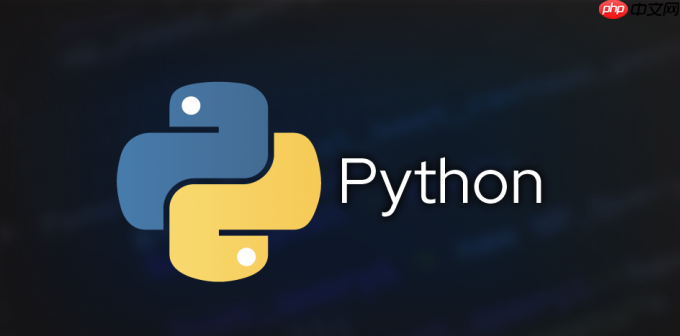线程局部存储是每个线程拥有变量独立副本的机制,Python通过threading.local()实现,确保多线程访问时数据隔离,避免竞争条件,适用于上下文管理、数据库连接等场景。

在Python多线程编程中,多个线程共享同一进程的内存空间,因此全局变量和堆上数据是共用的。如果多个线程同时操作相同的数据,容易产生数据混乱或竞争条件。为了解决这个问题,除了使用锁机制外,还可以通过线程局部存储(Thread Local Storage)来实现线程间的数据隔离——每个线程拥有自己独立的数据副本。
线程局部存储是一种机制,允许每个线程拥有某个变量的独立实例。即使多个线程访问同一个变量名,它们实际操作的是各自线程内部的副本,互不干扰。
在Python中,threading.local() 提供了这种功能,是实现线程数据隔离最简单有效的方法。
通过创建一个 threading.local() 实例,可以定义只属于当前线程的属性。
立即学习“Python免费学习笔记(深入)”;
示例代码:
import threading
import time
<h1>创建线程局部对象</h1><p>local_data = threading.local()</p><p>def process_student():</p><h1>每个线程读取自己线程的 student_name</h1><pre class="brush:php;toolbar:false;">std_name = local_data.student_name
print(f"当前线程: {threading.current_thread().name}, 学生姓名: {std_name}")def thread_task(name):
local_data.student_name = name process_student()
t1 = threading.Thread(target=thread_task, args=("Alice",), name="Thread-A") t2 = threading.Thread(target=thread_task, args=("Bob",), name="Thread-B")
t1.start() t2.start()
t1.join() t2.join()
输出结果:
当前线程: Thread-A, 学生姓名: Alice 当前线程: Thread-B, 学生姓名: Bob
可以看到,尽管两个线程调用了相同的函数并访问了相同的 local_data.student_name,但彼此之间没有干扰。
虽然 threading.local() 使用简单,但也有一些关键点需要注意:
例如,下面这种情况会导致异常:
def bad_task():
print(local_data.missing) # AttributeError: 'local' object has no attribute 'missing'
因为该线程尚未设置 missing 属性。建议使用默认值模式:
def safe_task(name):
if not hasattr(local_data, "student_name"):
local_data.student_name = "Unknown"
print(f"{threading.current_thread().name}: {local_data.student_name}")
threading.local() 常用于以下场景:
基本上就这些。threading.local() 是 Python 多线程中实现数据隔离的简洁方案,合理使用能有效避免共享数据带来的问题。关键是理解“每个线程看到的是自己的副本”这一核心概念。
以上就是Python多线程如何实现线程局部存储 Python多线程隔离数据方法的详细内容,更多请关注php中文网其它相关文章!

每个人都需要一台速度更快、更稳定的 PC。随着时间的推移,垃圾文件、旧注册表数据和不必要的后台进程会占用资源并降低性能。幸运的是,许多工具可以让 Windows 保持平稳运行。

Copyright 2014-2025 https://www.php.cn/ All Rights Reserved | php.cn | 湘ICP备2023035733号